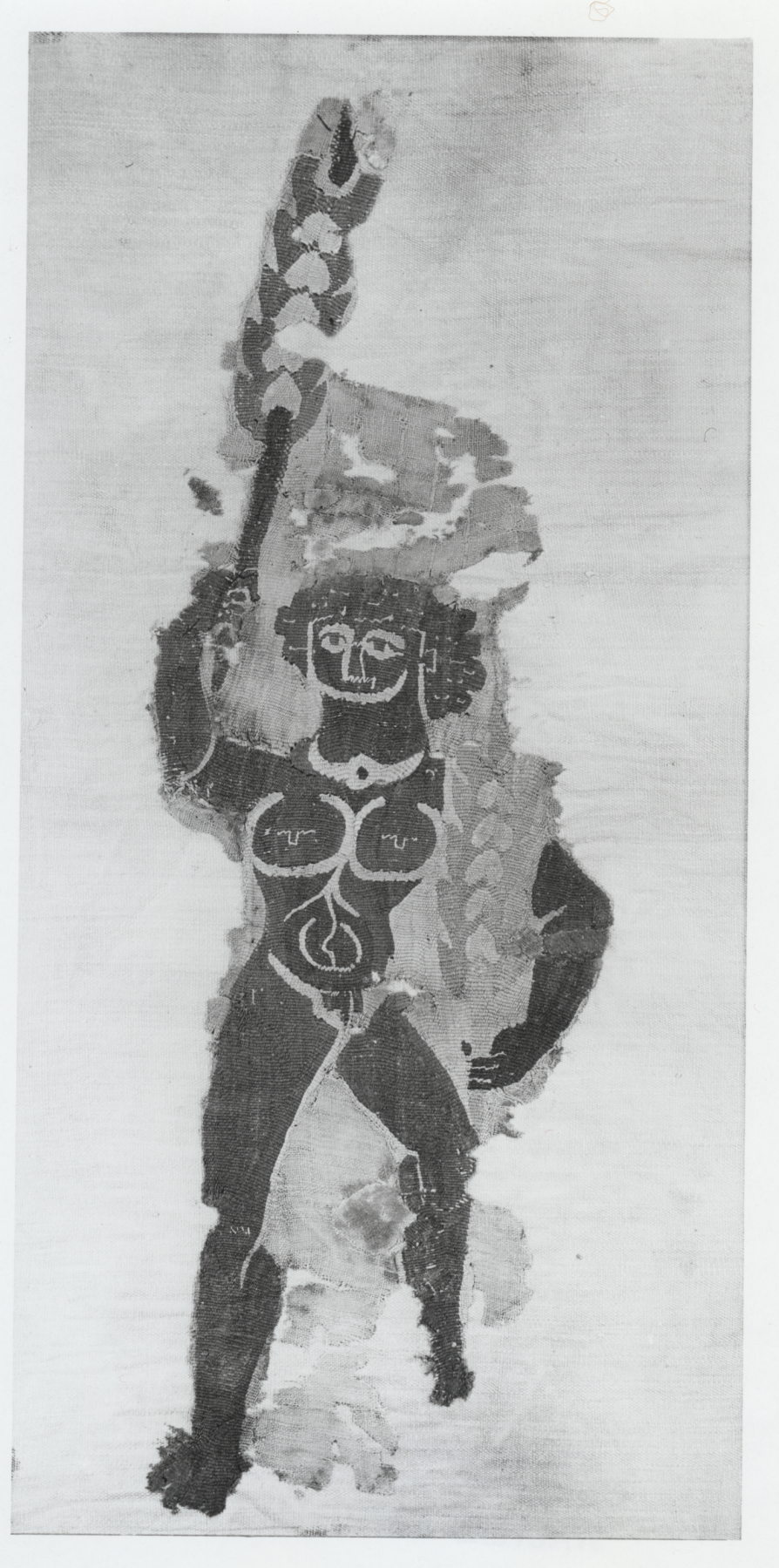Wall Hanging or Curtain Fragment with Dancer
(Byzantium and Early Russia, Textiles and Furniture )
This nude male dancer, wearing a torque and holding two flower staffs, was likely one of a pair or set of such dancers decorating a larger wall hanging or curtain fragment.
Curtains and wall hangings were used in private homes, as well as in public and religious buildings, to prevent drafts, divide spaces, and provide privacy. The tapestry weave of this piece is ideal for such textiles, as it produces a design that can be viewed from either side.
Provenance
Provenance (from the French provenir, 'to come from/forth') is the chronology of the ownership, custody, or location of a historical object. Learn more about provenance at the Walters.
Henry Walters, Baltimore, 1926 [mode of acquisition unknown]; Walters Art Museum, 1931, by bequest.
Exhibitions
| 1964-1965 | Man: Glory, Jest, and Riddle, A Survey of the Human Form Through the Ages. Fine Arts Museums of San Francisco, San Francisco; Fine Arts Museums of San Francisco, San Francisco. |
Conservation
| Date | Description | Narrative |
|---|---|---|
| 11/15/1938 | Treatment | cleaned; mounted |
| 11/3/1969 | Treatment | re-housed |
Geographies
Egypt (Place of Origin)
Measurements
24 1/2 x 8 1/8 x 1/16 in. (62.3 x 20.6 x 0.1 cm)
Credit Line
Acquired by Henry Walters, 1926
Location in Museum
Not on view
Accession Number
In libraries, galleries, museums, and archives, an accession number is a unique identifier assigned to each object in the collection.
In libraries, galleries, museums, and archives, an accession number is a unique identifier assigned to each object in the collection.
83.460


